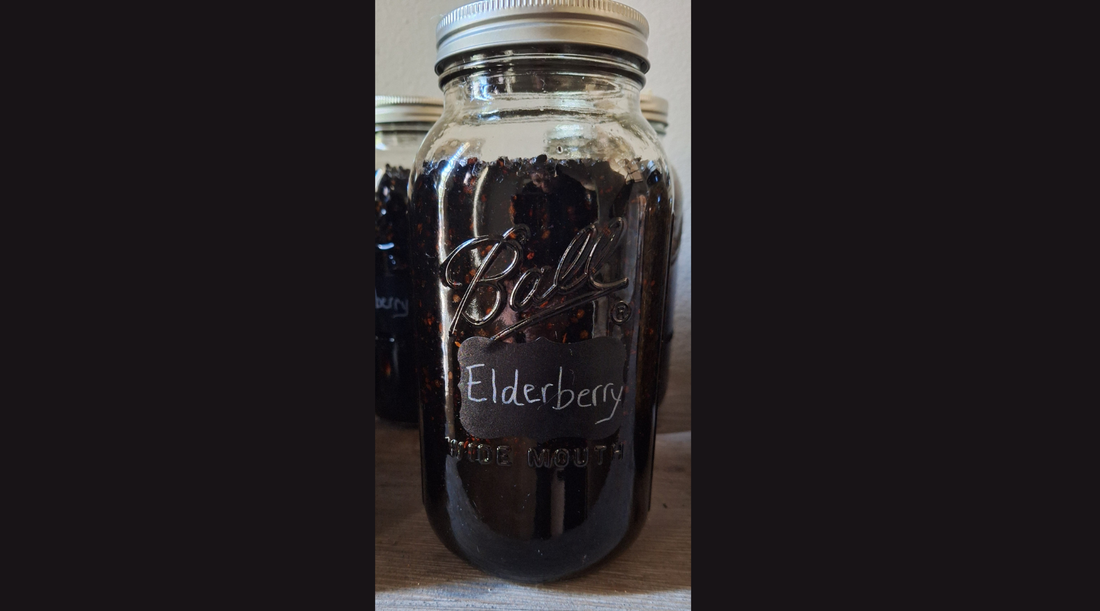
The Sweet Science: What Actually Happens When You Infuse Herbs into Honey
Ever wondered how herbs actually infuse into honey? If honey is thick, sticky, and mostly sugar, it doesn’t seem like the best candidate for extraction. Yet, over time, those flavors, aromas, and colors gently find their way into every spoonful.
Let’s dive into the fascinating science behind infused honey—why it works, what’s really happening inside the jar, and how to make the most flavorful batch possible.
What “Infusing” Really Means
Infusing is all about slow extraction. When you combine dried herbs and raw honey, the honey gradually draws out aromatic compounds from the plant material. Think of it like steeping tea—but instead of hot water, you’re using honey as your solvent.
Honey’s Unique Chemistry
Raw honey is a complex mixture of natural sugars, trace minerals, enzymes, and acids. Its low moisture content (around 17%) and high viscosity create a protective environment where flavors can mingle without spoiling.
This means your infusion stays shelf-stable while absorbing herbal notes over time.
Why Dried Herbs Work Best
Dried herbs have minimal water content, which helps prevent fermentation. They also concentrate flavor. Using dried herbs allows the honey to stay thick, clear, and long-lasting—without the risk of microbial growth that can happen with fresh herbs.
What’s Being Extracted from Herbs
When you infuse herbs in honey, three main things are drawn out:
-
Aromatics – These are volatile oils that give herbs their fragrance and taste (like the calming notes in chamomile or the spicy bite in ginger).
-
Color pigments – Anthocyanins, chlorophyll, and flavonoids can tint your honey from gold to ruby to deep amber.
-
Flavor compounds – These include phenolics, terpenes, and other natural molecules that create complexity and depth.
Over time, the honey’s natural acidity and mild enzymatic activity help these molecules migrate from the herbs into the honey—giving you a fusion of sweetness and herbal nuance.
Time, Temperature, and Surface Area — Your Three Flavor Levers
These three factors determine how intense and well-balanced your infused honey becomes.
1. Time
Infusion takes patience. A minimum of 2 weeks produces gentle flavor, while 4–6 weeks delivers a full-bodied taste. Longer infusions deepen the profile but can also bring out bitter notes in some herbs.
2. Temperature
Room temperature is ideal for clarity and purity of flavor. Gentle warmth (like keeping your jar in a sunny window for a few hours a day) can speed things up—but avoid heat sources that exceed 95°F, which can damage honey’s natural enzymes.
3. Surface Area
Crushed or lightly broken herbs expose more surface area, allowing faster extraction. However, grinding too finely can cause cloudiness or sediment. Aim for a rustic, loose crumble rather than powder.
Safety & Quality: Keeping It Clean and Shelf-Stable
You don’t need fancy equipment to make infused honey—but clean, dry conditions matter.
-
Use sterilized glass jars with tight-fitting lids.
-
Ensure your herbs are completely dry before adding them.
-
Leave a bit of headspace at the top of the jar for easy stirring or rotation.
Moisture is the main threat to shelf life, so resist the urge to use fresh herbs straight from the garden. They look lovely, but they can introduce unwanted water.
Label your jar with the herb name and infusion start date. This keeps your process organized and lets you track how flavor develops over time.
Troubleshooting Common Issues
Even seasoned infusers run into the occasional surprise. Here’s how to handle a few common hiccups:
-
Cloudiness: Often just air bubbles or fine particles from the herbs. If it persists, strain through cheesecloth.
-
Overpowering flavor: Blend your infusion with fresh raw honey to mellow it out.
-
Sediment: Let it settle; clear honey will rise to the top. You can strain or stir depending on your texture preference.
Pro Tips from the Studio
-
Flavor test early: Dip a cracker or spoon into your jar after week two. It helps you catch intensity before it goes too far.
-
Warm gently before straining: A quick 10-minute warm bath (around 90°F) thins the honey for easier filtering.
-
Blend base honeys and herbs: Try wildflower honey for earthier herbs, or orange blossom honey for floral blends.
A few of our favorite pairings:
🌿 Chamomile + Clover Honey for tea drinkers
🌿 Rosemary + Wildflower Honey for savory dishes
🌿 Ginger + Buckwheat Honey for spice lovers
The Magic Is in the Waiting
Infused honey isn’t instant—it’s alchemy. You’re watching time, nature, and chemistry collaborate to create something that can’t be rushed. Every jar is its own small batch of patience and discovery.
When you swirl a spoonful into tea, drizzle it on toast, or whisk it into dressing, you’re tasting weeks of quiet transformation.
Try It for Yourself
Want to skip the waiting and taste the results?
👉 Shop our small-batch infused honeys
